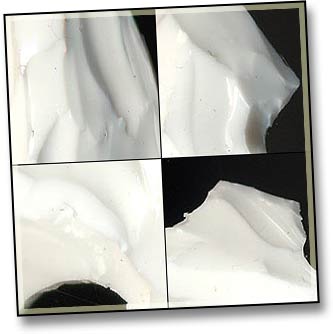Implant surface contamination
The picture here is a closeup photo of an manufactured by a well-known and competent practitioner after kicking around in Shannon's desk for a few weeks (as an implant potentially could "in the wild"). As you can see, its carved surface is quite rough and contains many small nooks and crannies. If the implant is not carved intraoperatively (during the procedure), then these can easily become surface contaminated by anything they come in contact with.
In the context of a body modification studio, this first and foremost means biological contamination. It is conceivable that microbes can "hide" in these spaces and be protected by them, thereby surviving the autoclaving process. Once the implant is in the body, they can be released to infect you with HIV, Hepatitis, or any number of things you don't need!
More commonly, this type of contamination can also include simply dragging "dirt" into the procedure. For example, paint dust could easily be dragged into an implant, dramatically increases the chances of infection, as well as leading to long and short term allergic reactions which can not be easily eliminated by the removal of the implant.
Minimize this risk both by proper handling of the implant to avoid contamination as well as proper (ie. smooth) finishing to minimize the risk of contamination.
